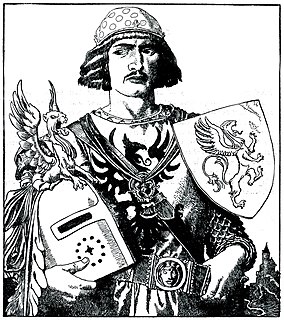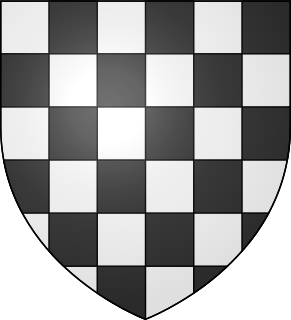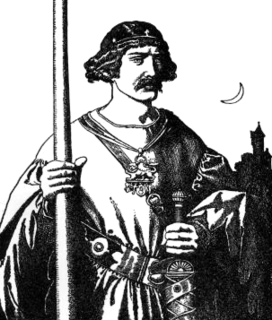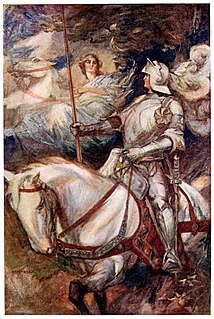Sir Tor is a Knight of the Round Table according to Arthurian legend. He appears frequently in Arthurian literature. In earlier mentions Tor's father is King Ars or Aries, [1] but the Post-Vulgate Cycle and Sir Thomas Malory's Le Morte d'Arthur say this man is his adoptive father while his natural father is King Pellinore. [2] [3]
The Post-Vulgate Cycle, also known as the Roman du Graal, is one of the major Old French prose cycles of Arthurian literature. It is essentially a rewriting of the earlier Vulgate Cycle, with much left out and much added, including characters and scenes from the Prose Tristan.
Sir Thomas Malory was an English writer, the author or compiler of Le Morte d'Arthur. Since the late nineteenth century, he has generally been identified as Sir Thomas Malory of Newbold Revel in Warwickshire, a knight, land-owner, and Member of Parliament. Occasionally, other candidates are put forward for authorship of Le Morte d'Arthur, but the supporting evidence for their claim has been described as "no more than circumstantial".

Le Morte d'Arthur is a reworking by Sir Thomas Malory of existing tales about the legendary King Arthur, Guinevere, Lancelot, Merlin, and the Knights of the Round Table. Malory interpreted existing French and English stories about these figures and adds original material. Malory's actual title for the work was The Whole Book of King Arthur and His Noble Knights of the Round Table, but after Malory's death the publisher changed the title to what is commonly known today. "The Death of Arthur" originally only referred to the final volume in the complete work.
In the Post-Vulgate and Malory, Tor is brother to Sir Aglovale, Sir Lamorak, Sir Dornar, Sir Percival, and Dindrane. He is born when Pellinore sleeps with his mother "half by force", and she marries Aries shortly afterward; here Aries is not a king, but a shepherd. Tor and his twelve half-brothers are raised as shepherds, but Tor dreams of being a knight. Finally his parents take him to King Arthur's court, and Arthur makes the boy one of his first knights. Later Merlin reveals Tor's true parentage, and Pellinore embraces his son. Neither Aries nor his wife seem offended.b Tor distinguishes himself at the wedding feast of Arthur and Guinevere when he takes up a quest to retrieve a mysterious white brachet hound that had come into the court. According to Malory, Tor and his brother Aglovale are among the knights charged with defending the execution of Guinevere; they both die when Lancelot and his men rescue the queen. [4]
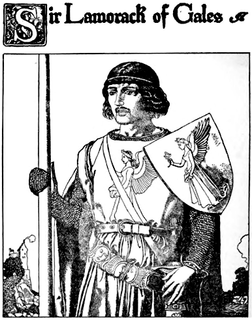
Sir Lamorak is a Knight of the Round Table in Arthurian legend, a son of King Pellinore and brother of Percival, Tor, Aglovale, and sometimes the Grail maiden Dindrane and others. Introduced in the Prose Tristan, Lamorak reappears in later works including the Post-Vulgate Cycle and Sir Thomas Malory's Le Morte d'Arthur. Malory refers to him as Arthur's third best knight, only inferior to Lancelot and Tristan, but Lamorak was not exceptionally popular in the romance tradition, confined to the cyclical material, subordinate to more prominent characters.

Percival —or Perceval, Percivale, Parzival, Parsifal, etc.—is one of King Arthur's legendary Knights of the Round Table. First made famous by the French author Chretien de Troyes, in the tale Perceval, the Story of the Grail, his story was allotted to the fictional figure of Peredur son of Efwc in the Welsh adaptation of Chretien's tale titled Peredur, Son of Efrawg. He is most well known for being the original hero in the quest for the Grail, before being replaced in later literature by Galahad.

